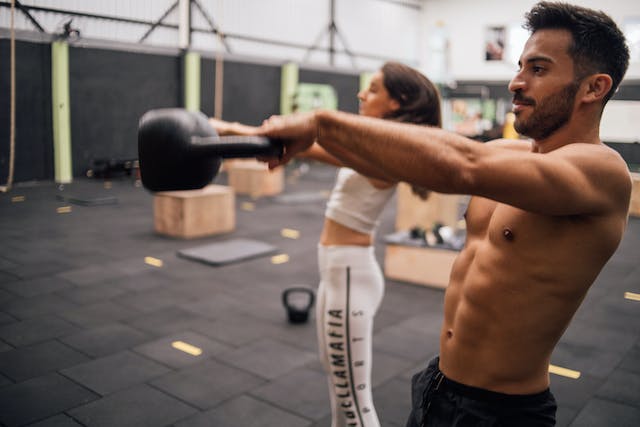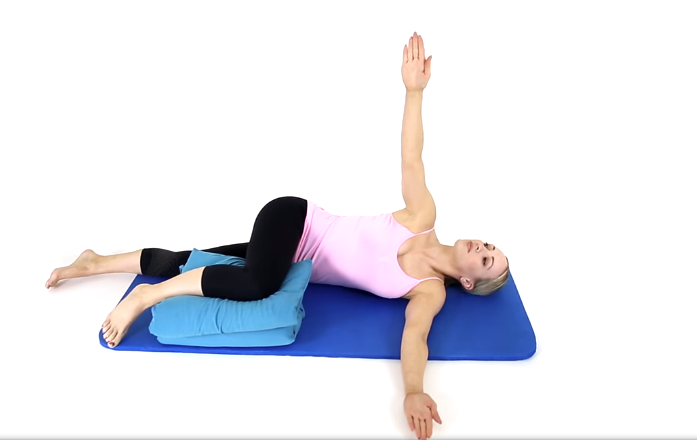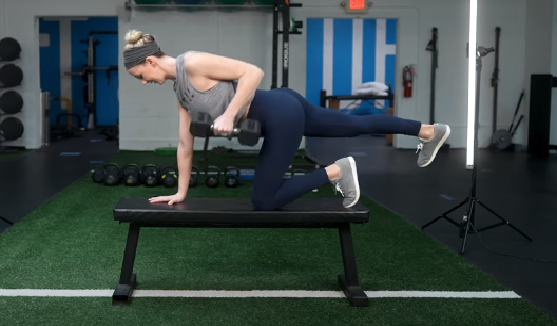The kneeling squat helps build the thigh muscles, including the glutes, the quadriceps and the hamstrings. It is a complex exercise for the muscles of the feet, and it is a real treatment for joints and reducing knee pain.
Also, the good thing is that you can make real progress in terms of the strength of the thigh muscles, improve the movement of the knee, and gain flexibility at the lowest cost, because the squat exercise does not require expensive equipment or machinery, so if you only have some weights, you will be ready to make tremendous progress in your lower body.
In this post, we will learn about the advantages of kneeling squatting, the correct ways to do it, and the advice of specialists to work with if you suffer from knee pain, and we will learn about the best variables that can contribute to achieving further progress.
Let’s continue together!
What is kneeling squat?
The kneeling squat is an exercise for the thigh muscles and the extension of the hips muscles, so that your knees are the support for your body while squatting, also the kneeling squat is an opportunity to restore the knee bend for people who are unable to bend the knee due to injury or something else.
According to NCBI, having strong knees is critical to the success of any athlete, so squatting may be one of the most important treatments that do not require the intervention of medications, that is, it is an athletic treatment that helps restore the mobility pattern of the knees.
Also, if you want to target the glutes or hamstrings with the quad muscles, the kneeling squat provides the greatest range of motion in order to stretch these muscles well, and with some added load can increase the yield of muscle production and improve strength.
Kneeling squat: muscle worked
- Glutes: The slow movement of the hips falling toward the heels helps strengthen the gluteus maximus and gluteus medius so that it extends more widely, even when returning from a squat it remains integrated.
- Quadriceps: The quadriceps muscles are integrated because they keep the body balanced, and they also expand with the movement of your hips, so that they remain tense throughout the exercise.
- Hamstrings: The pressure on the hamstrings starts when lowering the back of the thighs to the depth and also while raising them, this keeps the hamstrings muscles integrated with the rest of the other muscles.
- Hip Flexors: Also from the target muscles there are the hips that play a role in this exercise as well as they gain a wide range of motion to stretch well and contract while pushing the hip forward.
- Adductor Magnus: The adductors are muscles that are involved in some variants of the squat, if you want to target them well try to space your knees a little more than shoulder width and doing a kneeling squat this will make the adductors extend as well.
How to do a Kneeling Squat correctly?
The kneeling squat is an easy exercise that does not require skills and so on, but when it is performed professionally, it helps to activate the muscles and helps to stabilize the lower back and strengthen the muscles of the thighs, so try to do it correctly while following the following instructions.
You can use a mirror to monitor your side posture because it will make it easier for you to control your movement more correctly.
The first step:
- Start with a long kneeling on the floor, your shoulder is straight perpendicular with your hip to your knees, knees should be at a 90-degree angle.
The second step:
- Pull your butt tight to push the pelvis forward so that the pelvis is straight with the front of the thighs, keeping the torso at the back so that the spine is in a neutral position.
The third step:
- Stretch the neck and head up, and keep your eyes looking forward or close.
If this is your first time with a kneeling squat, focus on these steps for a few minutes.
How to do the movement correctly:
- Start folding your hips correctly using the abdominal muscles and legs, and let your butt go properly to your heels.
- Keep your upper part in a neutral position, that is, the deeper you go, the more your chest is forward and your back is straight forward as well, so when the back thigh muscles touch the back leg muscles, your chest should be parallel to the front of the knees from the front.
- Squeeze your legs and slowly raise your thigh muscles to a long kneeling position again, each time you reach this stage remember to keep your torso back a little, and press your pelvis forward.
Specialist advice to improve your performance with kneeling squats.
Try to connect the muscles from your sits bones to the backs of your knees, these should engage to start lifting your body and pushing your pelvis forward, as the backs of your legs work to push your pelvis forward, then your diaphragm and abs should stabilize your trunk, and the action of your legs should lift your torso upward.
Mistakes you should avoid during performing kneeling squat
- Arching back: Try to use your hip flexors to help you leave the spine neutral and keep your back straight, try to extend the hips back and push the lower abdominal muscles forward, and the chest muscles are parallel to your knees in front.
- Throwing back behind: learn to let your back go and discover your legs and abs
- Letting the pelvis fall quickly: This keeps the muscles completely relaxed and there is no benefit, so learn to slow down your movement well while climbing or squatting.
- Relying on the back to raise the chest: Always remember that this is the task of the legs and the upper part of the body is completely neutral, that is, do not try to use or engage any area in the upper part of the body with this exercise.
How to target vastus (intermedius, medialis, lateralis) with a kneeling squat?
- Vastus intermedius: When kneeling long keep your legs, or toes at the width of your shoulders, and hips go straight to the center of the legs.
- Vastus medialis: In order to target the vastus medialis, focus on letting your legs go out a little, here we mean you should leave your knees shoulder width apart but your legs or toes are more than shoulder width apart, then start squatting between your feet again.
- Vastus lateralis: In order to target the vastus lateralis, you will do the opposite of the previous movement, this time your feet will be close together so that the drop of the hips is the heels.
Advanced variations of kneeling squat for maximize muscle gain
You may not want to rely all the time on doing squats only with your bodyweight, so you can try some variables that add more challenge and annoy the muscles more and put more pressure on them. The variables also play an important role in increasing strength, mass and endurance.
1- Banded Kneeling Squat
The band adds a real challenge to the thigh muscles as it plays the opposite of you so that the thigh muscles are required to do more effort and remain under pressure throughout the exercise, the hamstrings muscles are one of the muscles that fight the band resistance along with the quadriceps muscles and this puts more pressure On the glutes muscles.
2- Barbell Kneeling Squat
Also, the barbell helps build muscle mass. If you are looking for isolated and toned muscles, the best thing that will help you to do this exercise is the Smith machine because it keeps the barbell in a vertical position all the time and this will help you keep your back straight and push the hips back and stop when your chest is parallel with the knees in front, it’s a real exercise.
3- Kneeling Squat (Dumbbell or Kettlebell)
Also, the dumbbell has a special touch in adding more challenge in this exercise, so that the balance of the body becomes important and the thigh muscles facing a greater challenge with the weight, you can add even the band to the side of the dumbbell, it will be a great resistance exercise, also helps you to gain flexibility and muscle and endurance.
What are the benefits of the kneeling squat?
Beginner friendly: You don’t need skills or an athletic body to start doing kneeling squats, all you have to do is learn the right steps to start training the thigh muscles.
Build lower body strength: Kneeling squats also help build strength and get your muscles used to weight-bearing or stretching.
Activate your glutes: Among the exercises that will also help you to operate the glutes muscles without the need for other complex exercises, and also with the addition of some loads, the results can be doubled.
Helps improve your performance in the fitness hall: The most important thing that kneeling squats help with is to improve the posture first and then improve the movement of the knees in order to master the front squat or other types of squats.
Reducing the risk of knee injuries: As you are reading this post, there is no doubt that one of your knees is bent now, because we bend our knees in the stairs, at work or when lifting weights, so the knee injury rate increases. Therefore, kneeling squats or its types are effective in protecting the knee from injuries.
Useful links
These links may be useful to you if you are a fan of building fitness and strength or gaining muscle at home, these links contain the most powerful CrossFit exercises that you can rely on mainly.
If you are a fan of bodyweight workouts, you can rely on these workouts at home, believe me, you may not need anyone to build strong fitness only at home.
More than 50 Bodyweight wods for beginners (no equipment needed)
Best Jump rope wods to burn a lot of calories
Bodyweight exercises for bigger triceps at home
If you have some equipment such as dumbbells, or a bar and some weights and you are a fan of building muscle, you may want to try the best CrossFit workouts for strength and build muscle endurance.
10 Best cable crossover alternatives at home
12 Best Triceps and Biceps exercises for big arms
Effective exercises for leg strength and hypertrophy
Strength your back with the best reverse pec deck alternatives



